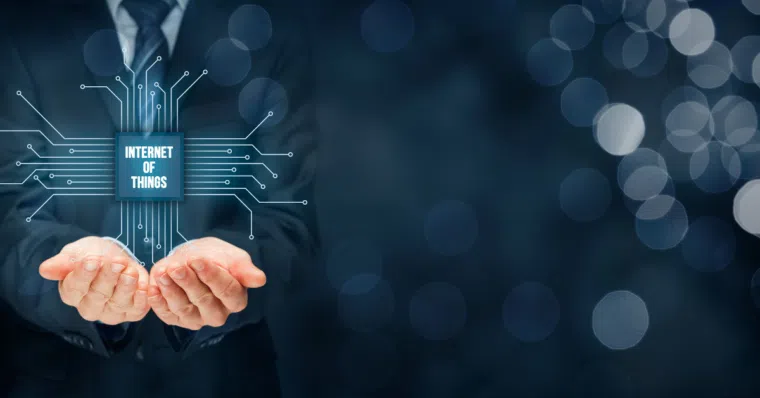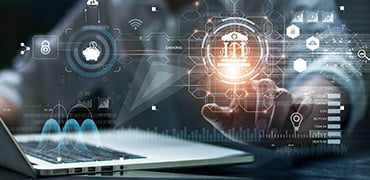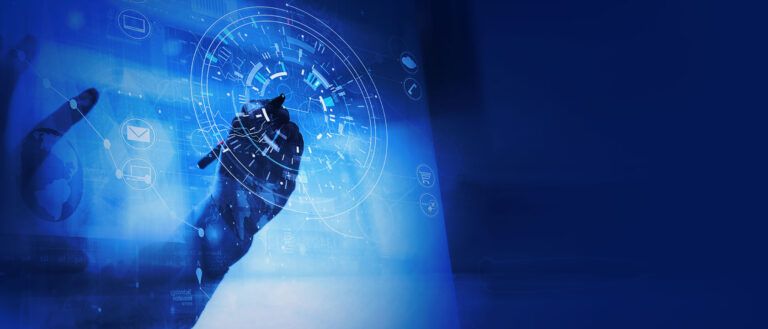The Top 10 Risks Associated With the Internet of Things

- What is the Internet of Things?
- How Does the Internet of Things Impact Our Daily Lives?
- What are Some Examples of IoT Devices Commonly Used in Everyday Life?
- How Does IoT Improve Efficiency and Convenience in Our Workplaces?
- What are the Potential Challenges and Risks Associated With IoT?
- Kickstart Your Technology Career With Emeritus
The Internet of Things (IoT) has revolutionized the way we interact with technology, bringing a world of interconnected devices and data-driven possibilities to our fingertips. According to a 2022 Gartner report, 51% of enterprise IT spending in key market segments will shift to the cloud by 2025. Moreover, 65.9% of application software spending will also be directed toward cloud technologies by 2025. This transformation signals a paradigm shift in how businesses operate and underscores the growing importance of IoT in driving efficiency and convenience.
This blog will explore the boundless potential of IoT, the challenges and opportunities it presents, and its impact on our daily lives. Read on to understand the IoT landscape and discover how this revolutionary technology is shaping the future of connectivity and innovation.
What is the Internet of Things?
The Internet of Things is a vast interconnected network of physical devices and objects. These devices collect and exchange data over the internet, enabling them to communicate and interact with each other. IoT devices encompass various sectors, including healthcare, transportation, and smart homes. Moreover, it continues to grow as technology advances, revolutionizing how we live and work. For example, it enhances automation, efficiency, and convenience through sensors, actuators, and connectivity.
Furthermore, businesses and consumers benefit from improved decision-making, real-time monitoring, and seamless integration. Additionally, by embracing the Internet of Things, we can transform our surroundings into a smart and interconnected ecosystem, enhancing our daily lives significantly. To sum up, it presents a promising future for a connected world.
ALSO READ: A Complete Guide on the Growing Field of Human-Computer Interaction
How Does the Internet of Things Impact Our Daily Lives?
 Firstly, the Internet of Things connects various devices and gadgets, enhancing convenience and efficiency. Additionally, it enables real-time monitoring of health, energy usage, and security monitoring. Also, it optimizes transportation systems, reducing traffic congestion and improving safety. Moreover, IoT-driven smart homes offer seamless control over appliances, lighting, and temperature. Furthermore, it facilitates remote work and telemedicine, promoting flexibility and accessibility. In a nutshell, IoT’s pervasive presence simplifies tasks, enriches communication, and empowers individuals, revolutionizing the way we live and interact. Embracing this technology unlocks a world of possibilities, making our lives more interconnected and productive than ever before.
Firstly, the Internet of Things connects various devices and gadgets, enhancing convenience and efficiency. Additionally, it enables real-time monitoring of health, energy usage, and security monitoring. Also, it optimizes transportation systems, reducing traffic congestion and improving safety. Moreover, IoT-driven smart homes offer seamless control over appliances, lighting, and temperature. Furthermore, it facilitates remote work and telemedicine, promoting flexibility and accessibility. In a nutshell, IoT’s pervasive presence simplifies tasks, enriches communication, and empowers individuals, revolutionizing the way we live and interact. Embracing this technology unlocks a world of possibilities, making our lives more interconnected and productive than ever before.
ALSO READ: A Guide to Information Systems: Benefits, Career & Salary
What are Some Examples of IoT Devices Commonly Used in Everyday Life?
Here are some notable examples of Internet of Things devices commonly used in our daily lives:
1. Smartwatches
They enable you to receive notifications and control smart home devices from your wrist.
2. Smart Thermostats
You can adjust home temperature remotely for energy efficiency and comfort.
3. Fitness Trackers
These are used to monitor daily activity, heart rate, and sleep patterns for a healthier lifestyle.
4. Smart Speakers
You can use command voice-activated assistants to play music, answer queries, and control home automation.
5. Security Cameras
They make it easy to keep an eye on your home in real-time through your smartphone or computer.
6. Connected Home Appliances
Smart refrigerators, lightbulbs, and locks offer convenience and energy savings.
7. Health Monitors
These allow for continuous health tracking and data analysis for personalized wellness insights.
How Does IoT Improve Efficiency and Convenience in Our Workplaces?
First and foremost, IoT automates mundane tasks, therefore optimizing operations. Secondly, real-time data collection empowers quick decision-making. It also fosters collaboration and communication among teams. Additionally, remote monitoring ensures timely maintenance, reducing downtime. That apart, predictive analytics prevents costly breakdowns.
Moreover, smart office systems optimize energy consumption, curbing costs sustainably. As a result, IoT promotes an agile work environment. Also consider that interconnected devices enable effortless and seamless access to information, making remote collaboration a reality. Consequently, businesses gain a competitive edge as its integration streamlines processes, empowering employees and businesses to thrive. Therefore, embracing this technology elevates productivity, comfort, and overall workplace performance, thus making the Internet of Things an indispensable tool for modern workplaces.
ALSO READ: What are the Highest Paying Computer Science Jobs? A Comprehensive Guide
What are the Potential Challenges and Risks Associated With IoT?
 Security Breaches
Security Breaches
IoT devices often collect and transmit sensitive data, making them attractive targets for cybercriminals. Consequently, weak security measures or outdated firmware can leave devices vulnerable to hacking. As a result, breaches can lead to data theft, unauthorized access to systems, and even ransomware attacks, causing significant financial and reputational damage.
Privacy Concerns
With IoT devices constantly gathering data from users and their surroundings, there are growing privacy concerns. The massive amount of data collected can reveal intimate details of individuals’ lives. Moreover, it can be misused or sold to third parties without consent if not adequately protected.
Interoperability Issues
Internet of Things devices come from various manufacturers using different communication protocols. This makes seamless communication and data exchange challenging. Consequently, the lack of interoperability can lead to fragmentation, hindering the creation of cohesive and integrated IoT solutions.
Data Overload
The sheer volume of data generated by Internet of Things devices can overwhelm systems and networks. As a result, processing and analyzing this data in real-time can be a challenge, potentially affecting decision-making and system responsiveness.
Lack of Standards
The absence of universal IoT standards leads to compatibility issues. This lack of standardization makes it harder to create a unified framework, thereby hindering the development of large-scale Internet of Things applications.
Reliability Concerns
Malfunctioning or poorly designed Internet of Things devices can disrupt operations, leading to potential financial losses and safety risks.
Scalability
As the number of Internet of Things devices grows, managing them all becomes complex. Consequently, scaling up an IoT infrastructure demands robust management and resource allocation.
Regulatory Compliance
With the amount of sensitive data being collected and transmitted, companies must navigate complex data protection and privacy regulations to avoid legal consequences.
Energy Consumption
Power-intensive features can quickly drain the batteries of many Internet of Things devices. This, in turn, affects the overall sustainability and cost-effectiveness of IoT deployments.
Cost and Investment
Implementing IoT solutions requires significant investment in hardware, software, training, and ongoing maintenance. This acts as a barrier to adoption, especially for smaller businesses.
Kickstart Your Technology Career With Emeritus
To conclude, the Internet of Things offers immense potential to transform our lives and workplaces. By streamlining processes, enhancing communication, and enabling data-driven decisions, IoT empowers us to work smarter and live more conveniently. However, it is crucial to address challenges like security and privacy concerns to harness its full benefits. Embracing this technology responsibly will pave the way for a connected and efficient future. Therefore, start to explore how the Internet of Things can transform your business and leverage its benefits by enrolling in Emeritus’ technology courses, offered in collaboration with top global institutions.
Write to us at content@emeritus.org






